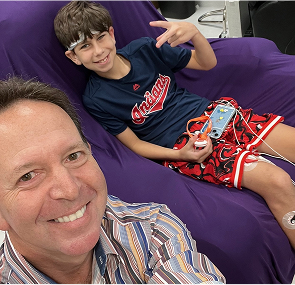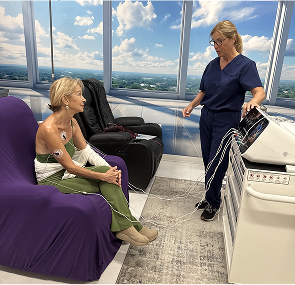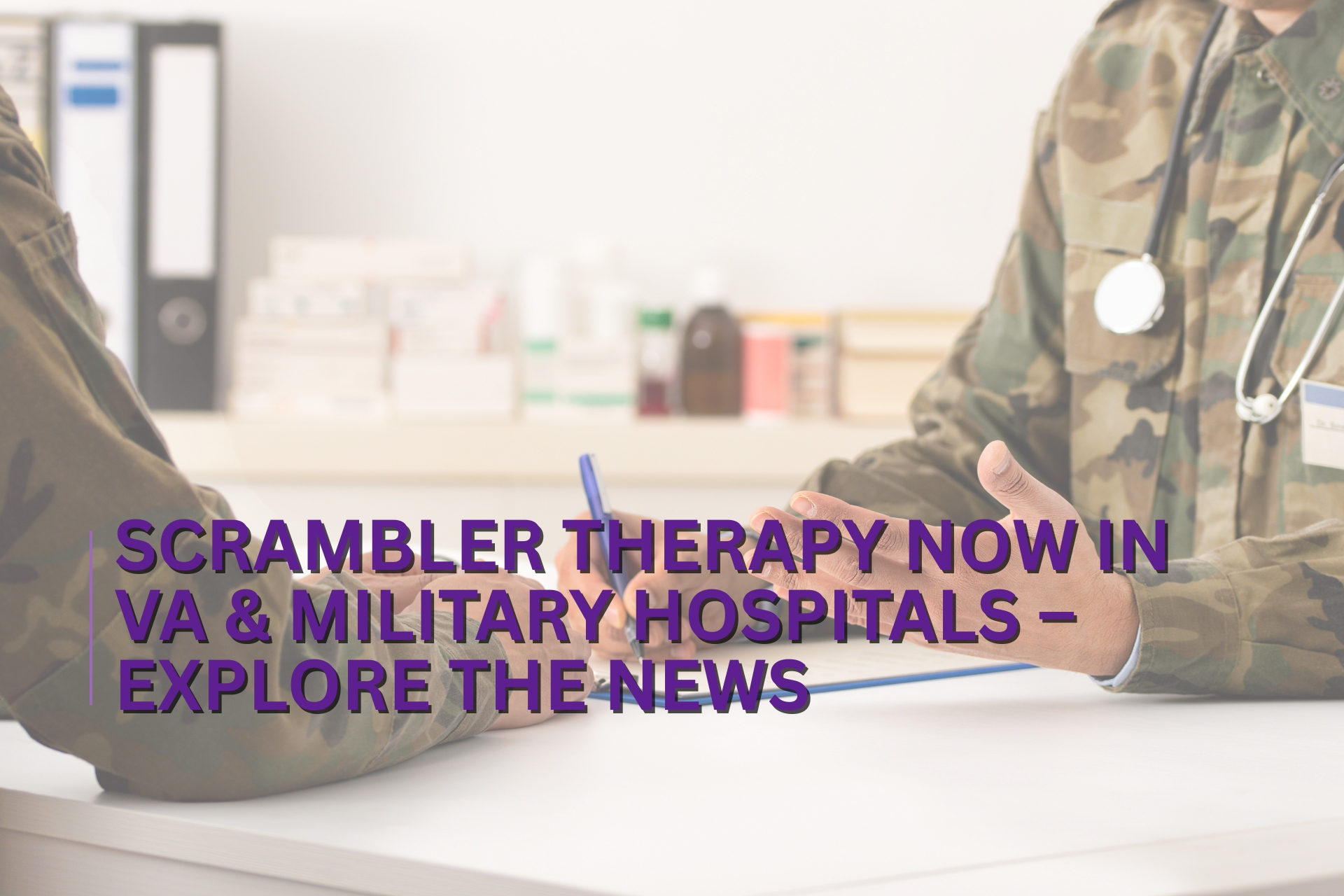Clinical Trials Demonstrating the Effectiveness of Scrambler Therapy
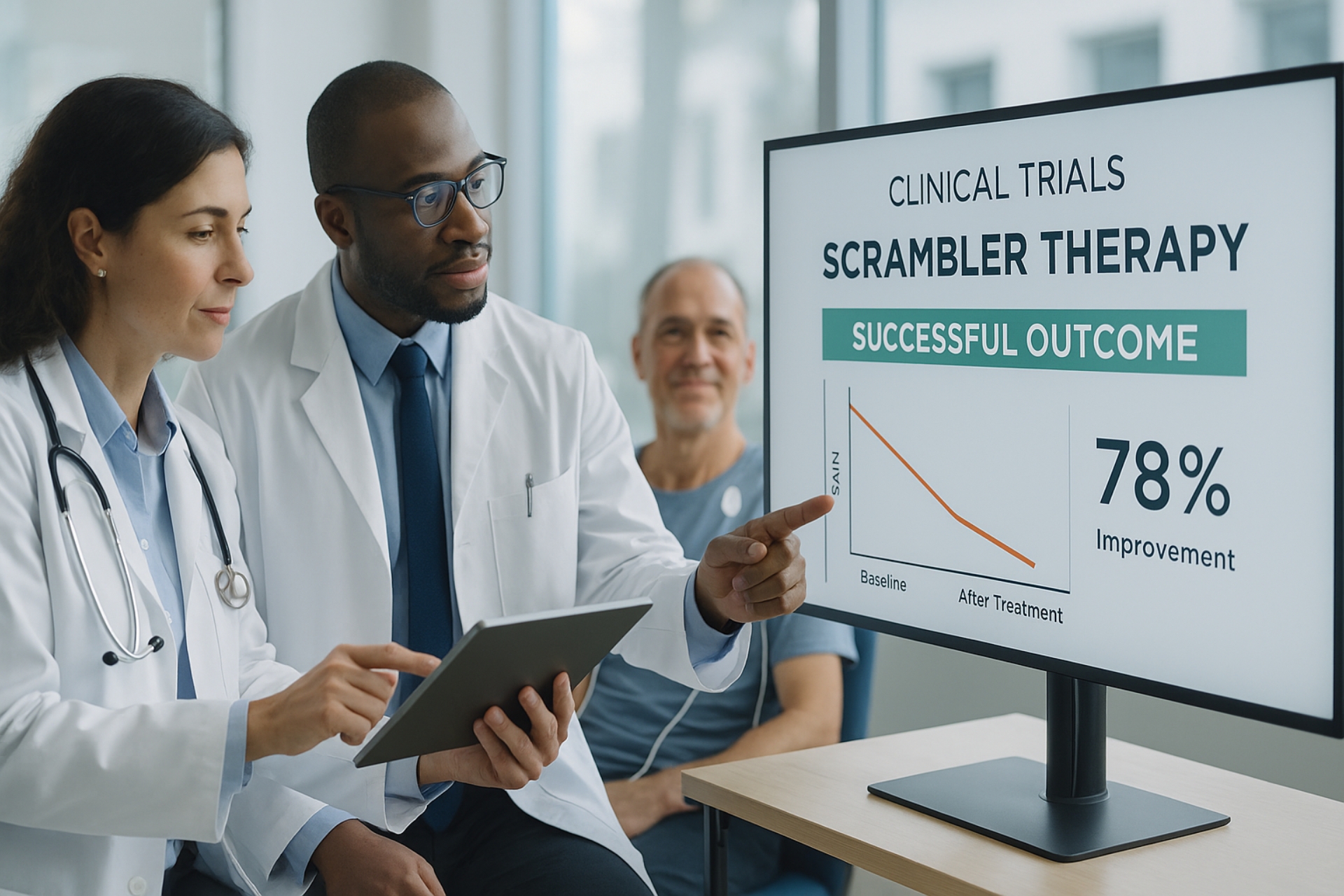
Scrambler Therapy is a non-invasive neurostimulation treatment designed to relieve chronic and neuropathic pain without medication. It delivers low-dose electrical signals to disrupt pain messages sent through damaged nerves. By “scrambling” these pain signals, the therapy aims to retrain the nervous system to interpret pain differently.
Scrambler Therapy explained in clinical context:
- Used for: Chronic neuropathic pain, including post-surgical nerve pain and chemotherapy-induced peripheral neuropathy
- Mechanism: Alters pain signal processing using external electrical stimulation
- Alternative to: Opioids, antidepressants, and other systemic medications
- Supports: Neuroplasticity, allowing the brain to ‘unlearn’ chronic pain patterns
Unlike standard painkillers, Scrambler Therapy works directly on the pain signaling pathways, making it a non-drug, non-invasive solution for long-standing pain that resists conventional treatment.
In the next section, we’ll break down the mechanism that drives its results.
How does Scrambler Therapy work on a physiological level?
Scrambler Therapy reprograms pain signals at the nerve level through surface electrodes. These electrodes target C-fibers, the nerve fibers responsible for transmitting chronic pain. It uses a proprietary waveform to send "non-pain" information to override existing pain signals.
Key mechanisms of action:
Gate control theory suggests the spinal cord can suppress incoming pain signals. Scrambler Therapy exploits this by sending “no pain” information via electrical stimulation, modulating how the central nervous system perceives chronic pain.
Coming up: Clinical trials that evaluated its effectiveness with real patients.
What do clinical trials reveal about Scrambler Therapy’s effectiveness?
Clinical trials have confirmed that Scrambler Therapy significantly reduces pain scores in patients with various neuropathic pain syndromes. Below are pivotal studies supporting its use:
1. Marineo et al., 2003 – Initial Pilot Study
- Design: Single-arm pilot
- Sample: 11 patients with terminal cancer pain
- Results: >70% pain reduction sustained over 3 weeks
- Note: Introduced core mechanisms and therapeutic model
2. Smith et al., 2010 (Mayo Clinic)
- Type: Open-label study
- Sample: 16 patients with chemotherapy-induced peripheral neuropathy (CIPN)
- Outcome: Pain scores decreased from average 6.6 to 2.4 after 10 sessions
- Observation: Patients showed functional improvement and increased sleep quality
3. Ricci et al., 2012 – RCT in Neuropathic Pain
- Design: Randomized controlled trial
- Participants: 52 with chronic neuropathic pain
- Control: Placebo stimulation
- Result: Significant reduction in pain intensity (P < 0.01) in treatment group
- Follow-up: Effects lasted 2–3 months post-treatment
4. Marineo et al., 2012 – Multicenter Validation Study
- Type: Double-blind, placebo-controlled
- Patients: 226 across 11 centers
- Pain Conditions: PHN, CIPN, diabetic neuropathy
- Outcome: 80% of participants had ≥50% reduction in pain
Conclusion from data: Peer-reviewed Scrambler Therapy trials consistently demonstrate high treatment response rates, minimal side effects, and sustained relief.
Next, we compare it with other pain management therapies.
How does Scrambler Therapy compare to traditional pain management options?
Scrambler Therapy shows comparable or superior outcomes to traditional treatments like opioids, TENS, and physical therapy—without the risk of dependency.
Comparative overview:
Scrambler Therapy provides a non-addictive, non-invasive, outpatient alternative for patients seeking relief from persistent pain. Unlike TENS, which only stimulates nerve endings, Scrambler modifies signal interpretation in the central nervous system.
Now we explore the specific types of pain Scrambler Therapy targets.
What pain conditions has Scrambler Therapy been proven to treat?
Scrambler Therapy has been used effectively across a range of chronic and treatment-resistant pain conditions, especially those with a neuropathic basis.
Conditions with clinical evidence:
- Chemotherapy-Induced Peripheral Neuropathy (CIPN)
→ Improved pain and function in cancer survivors - Diabetic Neuropathy
→ Decreased burning and tingling sensations in feet and legs - Post-Herpetic Neuralgia (PHN)
→ Reduced pain intensity and improved sleep - Spinal Cord Injury Pain
→ Enhanced tolerance to stimulation with long-lasting effects - Fibromyalgia
→ Modest relief reported in multiple open-label trials
These cases involve nerve damage or central sensitization, making them ideal targets for therapies that act on pain pathways rather than symptoms.
In the next section, we’ll describe how Scrambler Therapy is applied in clinical settings.
What does a typical Scrambler Therapy session involve?
Scrambler Therapy is administered in outpatient clinics, usually under the supervision of trained therapists. Patients remain awake and seated during the procedure.
Clinical protocol details:
The therapy device delivers non-pain electrical waveforms through adhesive electrodes. Patients often report a mild tingling or massaging sensation.
Now we’ll look at real-world outcomes and satisfaction rates among patients.
What results and benefits do patients report after Scrambler Therapy?
Patients consistently report meaningful reductions in pain intensity, improved daily functioning, and enhanced quality of life.
Documented benefits:
- Pain Scores: Average drop of 3–5 points on the Numeric Rating Scale (0–10)
- Mobility: Improved walking, standing, and daily activities
- Sleep: Restoration of sleep cycles interrupted by chronic pain
- Mental Health: Reduced anxiety and emotional distress related to pain
In a 2020 multi-center follow-up study, over 70% of patients maintained benefits for up to 6 months. Functional improvement and return to work were also noted in working-age adults.
Next, we’ll cover limitations and criticisms from clinical trials.
Are there limitations or controversies in Scrambler Therapy clinical data?
Despite strong anecdotal and clinical support, Scrambler Therapy faces scrutiny for small trial sizes, placebo effects, and reproducibility issues.
Key concerns raised:
- Small Sample Sizes: Most trials involve <100 participants
- Blinding Difficulties: Patients can sense stimulation, challenging double-blind models
- Placebo Effect: Subjective pain relief may be influenced by expectations
- Reproducibility: Protocol differences across clinics affect consistency
Researchers advocate for larger, multicenter RCTs with standardized protocols to confirm and extend findings. Despite these issues, published results remain promising.
Next: What do regulatory bodies like the FDA say about Scrambler Therapy?
What is the FDA and international regulatory status of Scrambler Therapy?
Scrambler Therapy is FDA-cleared as a Class II medical device for use in the U.S. under the name “MC-5A Calmare.” It has also received CE certification in Europe.
Regulatory landscape:
- USA: FDA clearance for pain relief; not yet widely covered by insurance
- Europe: CE-marked for pain indications
- Asia: Used in countries like India, South Korea, and Japan
- Insurance: Coverage varies; some private payers include partial reimbursement
Global adoption remains uneven, but interest is growing as more data validates the therapy’s safety and effectiveness.
In the next section, we explore how Scrambler fits into integrated pain management programs.
How is Scrambler Therapy integrated into broader pain management plans?
Scrambler Therapy is most effective when combined with multimodal pain strategies. Clinics often integrate it with CBT, physical therapy, or pharmacologic treatments to support full recovery.
Common combinations include:
- CBT + Scrambler: Improves mental resilience alongside pain relief
- PT + Scrambler: Enhances mobility while reducing discomfort
- Low-dose medications + Scrambler: Minimizes drug reliance
- Rehabilitation programs: Supports long-term pain management
This holistic approach allows for customized treatment plans tailored to individual pain profiles and response patterns.
Now, we shift to the future of Scrambler Therapy.
What does the future hold for Scrambler Therapy?
Emerging research is focusing on personalized Scrambler Therapy using AI and machine learning. These tools may optimize stimulation parameters based on biomarkers and patient data.
Innovations on the horizon:
- AI-Driven Stimulation Adjustments
- Biomarker-Based Patient Selection
- Wearable or portable devices
- Neurotech-enhanced therapy dashboards
- Ongoing global clinical trials
This direction aligns with trends in precision pain medicine, where treatments are adjusted in real-time to match patient biology.
Last, we answer common user questions.
Frequently Asked Questions (FAQs)
What is Scrambler Therapy and how does it work?
It’s a neurostimulation therapy that replaces chronic pain signals with non-pain signals via surface electrodes.
Is Scrambler Therapy FDA approved?
Yes, it is FDA-cleared as a Class II medical device for pain treatment.
What conditions can Scrambler Therapy treat?
It’s used for CIPN, diabetic neuropathy, post-herpetic neuralgia, fibromyalgia, and spinal cord injury pain.
How many sessions of Scrambler Therapy are needed?
Usually 10 to 15 daily sessions, each lasting around 30–45 minutes.
What do clinical trials say about Scrambler Therapy’s effectiveness?
Trials show 50–80% pain reduction in most patients, with effects lasting several months.
Experiencing Chronic Pain in South Florida?
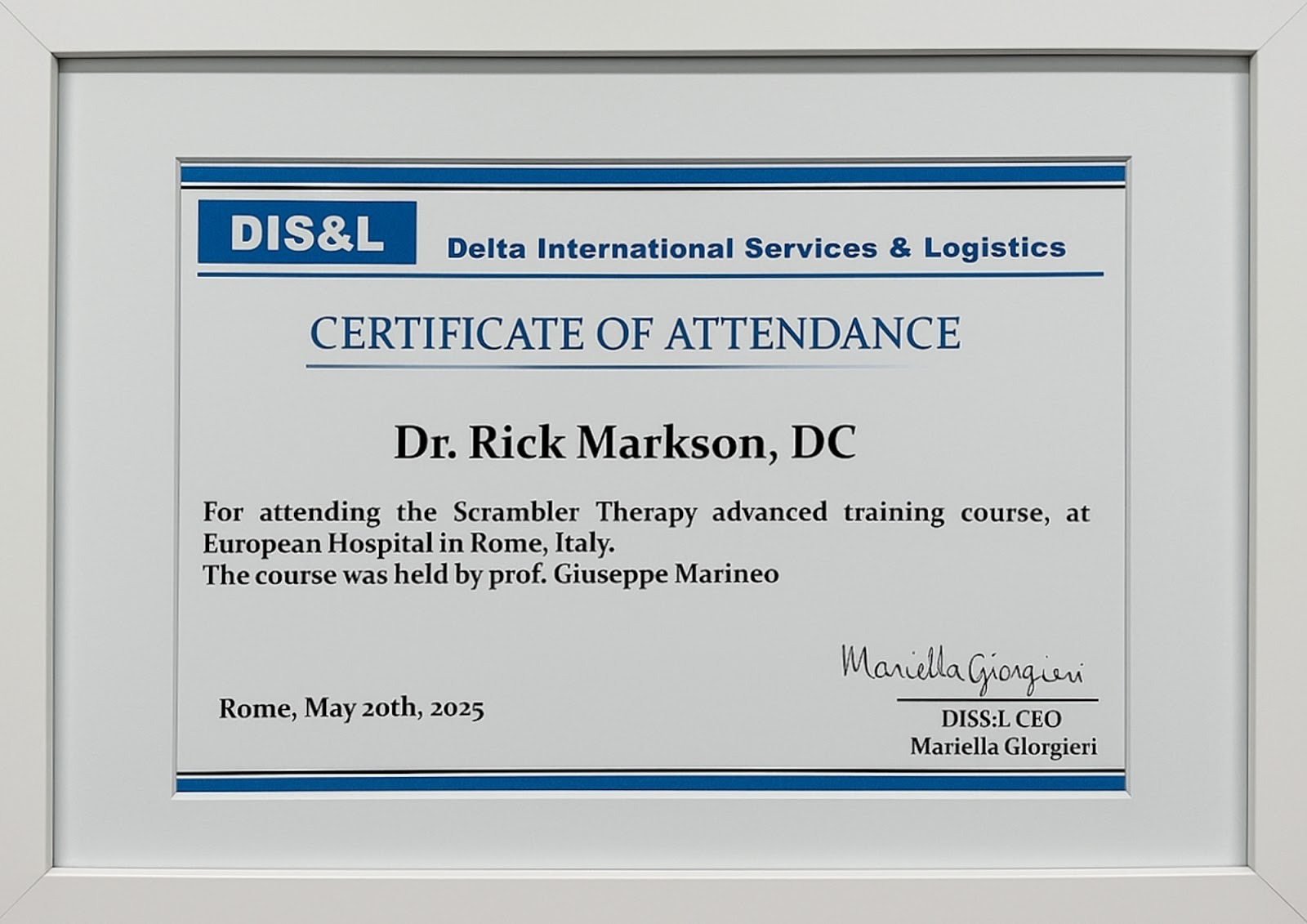
Discover South Florida Scrambler Therapy is one of the nation’s leading clinics for noninvasive chronic pain relief, offering FDA-cleared Scrambler Therapy® for adults and children. Co-founded by Dr. Rick Markson, one of the few practitioners worldwide to receive advanced certification directly from the therapy’s inventor in Rome, our clinic delivers globally recognized expertise with compassionate, personalized care. If you or a loved one is living with treatment-resistant nerve pain, we invite you to schedule a consultation and explore a life beyond pain.
Recommended Reads:
📘 What is scrambler therapy?
📘 What to Expect During a Scrambler Session
📘 CRPS Pain Relief Without Drugs—Real Patient Stories
📘 Conditions that scrambler therapy can treat
Take the Next Step: Free Consultation at South Florida Scrambler

Every day counts when we suffer from chronic pain. South Florida Scrambler Therapy offers a free initial consultation to determine if Scrambler is right for you. Schedule Today:
- Speak directly with Dr. Rick Markson’s team
- Learn about treatment protocols and insurance
- Complete a customized treatment plan
- Start seeing results within days, not months
📞 Call Now or Visit website: www.southfloridascramblertherapy.com
📍 We serve Palm Beach, Fort Lauderdale, and Miami from our location at 100 NW 100th Ave, Plantation
You Can Follow Us through Our Social Media:
📸Instagram—Day-in-the-life stories from our patients
👍Facebook—Success journeys and community support
You deserve to laugh, and enjoy life without pain. The journey starts here.
Start Your Pain-Free Journey Today
